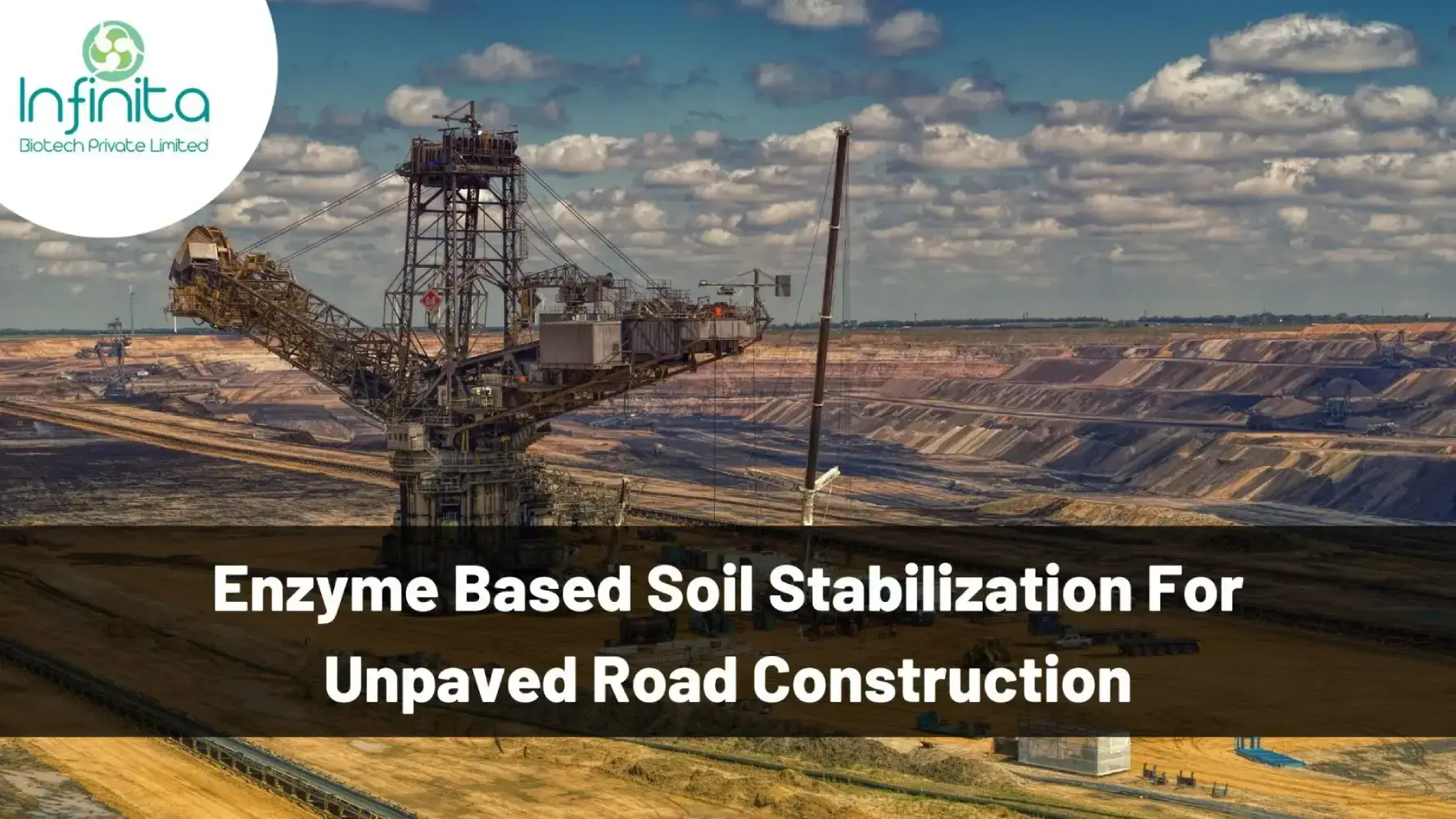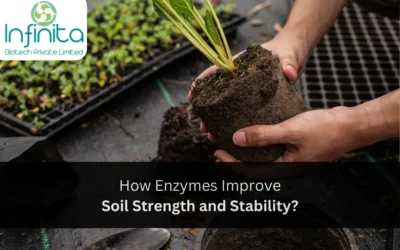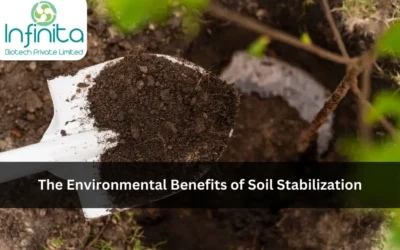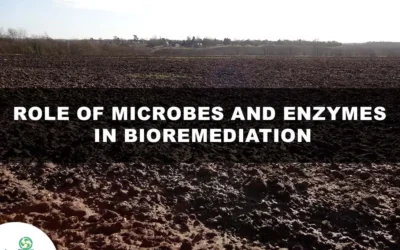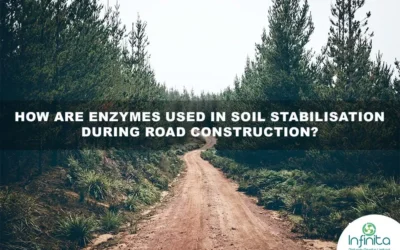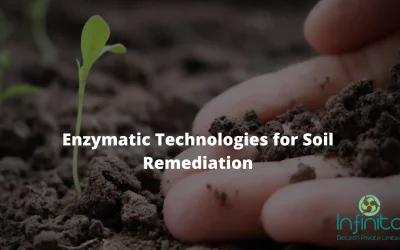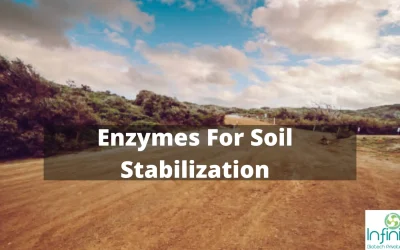Soil stabilization is a process that helps to improve the properties of soil, making it more suitable for construction purposes. In this process, the soil is treated with stabilizing agents such as chemicals or enzymes, that modify its physical, chemical, and biological properties.
Enzyme-based soil stabilization is a relatively new and innovative approach to soil stabilization. Unlike traditional methods that rely on chemicals, enzyme-based soil stabilization utilizes naturally occurring enzymes to modify the soil.
The purpose of this article is to provide a comprehensive overview of enzyme-based soil stabilization, including its working principle, applications, advantages, limitations, and future.
What is Soil Stabilization?
Soil stabilization is a process that helps to improve the properties of soil, making it more suitable for construction purposes. There are various types of soil stabilization, including chemical stabilization, mechanical stabilization, and biological stabilize.
The benefits of soil stabilization are numerous. It helps to improve soil strength and stability, reduces soil erosion, and enhances the overall performance of the soil.
Enzyme-based soil stabilization is a relatively new and innovative approach to soil stabilization. Unlike traditional methods that rely on chemicals, enzyme-based soil stabilization utilizes naturally occurring enzymes to modify the soil. Enzyme-based soil stabilization has several advantages over traditional methods, including being environmentally friendly, cost-effective, and technically advanced.
Enzyme-based Soil Stabilization
Enzyme-based soil stabilization is a process that utilizes naturally occurring enzymes to modify the soil. Enzymes are biological catalysts that are capable of breaking down organic matter, thereby improving the physical and chemical properties of the soil.
The enzymes used in enzyme-based soil stabilization are typically derived from microorganisms such as bacteria, fungi, and yeast. These enzymes are carefully selected based on their ability to modify the soil in a specific way. For example, some enzymes are used to break down organic matter, while others are used to improve soil structure.
The characteristics of enzyme-based soil stabilization include being environmentally friendly, cost-effective, and technically advanced. It also has the advantage of being able to modify the soil in a way that is not possible with traditional methods.
Unpaved Road Construction and Soil Stabilization
Unpaved road construction refers to the construction of roads that are not paved with asphalt or concrete. These roads are often made from natural materials such as gravel, dirt, or sand.
Soil stabilization plays an important role in unpaved road construction. By improving the physical and chemical properties of the soil, soil stabilization helps to make the road more stable, durable, and long-lasting.
Enzyme-based soil stabilization has several advantages over traditional methods in unpaved road construction. It is environmentally friendly, cost-effective, and technically advanced. Additionally, enzyme-based soil stabilization can modify the soil in a way that is not possible with traditional methods.
Applications of Enzyme-based Soil Stabilization
Enzyme-based soil stabilization has a wide range of applications, including agricultural land development, erosion control, and landfill stabilization.
In agricultural land development, enzyme-based soil stabilization can be used to improve soil fertility and increase crop yields. In erosion control, it can be used to reduce soil erosion and improve soil stability. And in landfill stabilization, it can be used to reduce the amount of waste that is produced, improve soil stability, and reduce the risk of contamination.
Advantages of Enzyme-based Soil Stabilization Over Traditional Methods
Enzyme-based soil stabilization has several advantages over traditional methods, including being environmentally friendly, cost-effective, and technically advanced.
From an environmental perspective, enzyme-based soil stabilization is a more sustainable and eco-friendly option than traditional methods. It does not release harmful chemicals into the environment and can help to reduce the amount of waste produced.
From a cost perspective, enzyme-based soil stabilization is often more cost-effective than traditional methods. This is because it does not require the use of expensive chemicals, and the enzymes used can be produced on a large scale, reducing the cost per unit.
From a technical perspective, enzyme-based soil stabilization is a more advanced option than traditional methods. It can modify the soil in a way that is not possible with traditional methods, and it can be used in a variety of different applications, making it a versatile option.
Challenges and Limitations of Enzyme-based Soil Stabilization
Despite its many advantages, enzyme-based soil stabilization is not without its challenges and limitations. Some of the limitations of enzyme-based soil stabilization include the need for specialized equipment, the need for specialized knowledge, and the need for specialized training.
One of the challenges in implementing enzyme-based soil stabilization is the need for specialized equipment and training. This can make it difficult for contractors to adopt the technology and can also increase the cost of implementation. Additionally, the lack of knowledge and understanding of enzyme-based soil stabilization can also be a barrier to its adoption.
Another challenge is the need for precise control over the application of enzymes. Enzymes are highly sensitive to environmental factors such as temperature and pH, and if not carefully controlled, can have negative impacts on soil stability.
Conclusion
In conclusion, enzyme-based soil stabilization is a promising and innovative approach to soil stabilization. It offers several advantages over traditional methods, including being environmentally friendly, cost-effective, and technically advanced.
Enzyme-based soil stabilization has a wide range of applications, including agricultural land development, erosion control, and landfill stabilization. Despite its many advantages, it is not without its challenges and limitations, including the need for specialized equipment, knowledge, and training.
The future of enzyme-based soil stabilization looks bright, and it is expected to play an increasingly important role in the field of soil stabilization in the coming years. It is recommended that further research be conducted to improve our understanding of enzyme-based soil stabilization and to develop new and innovative applications for this technology.
